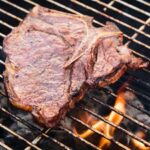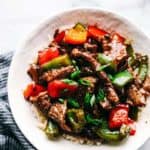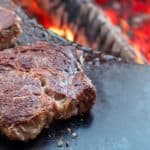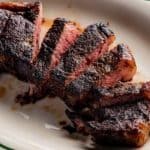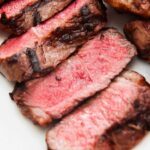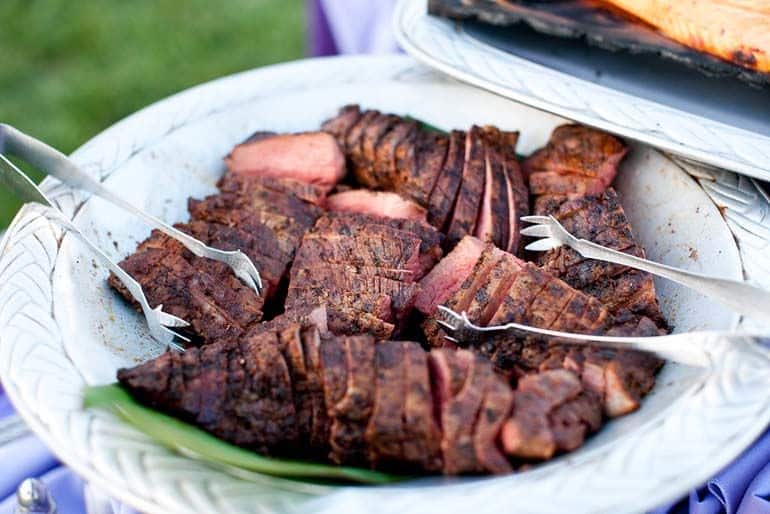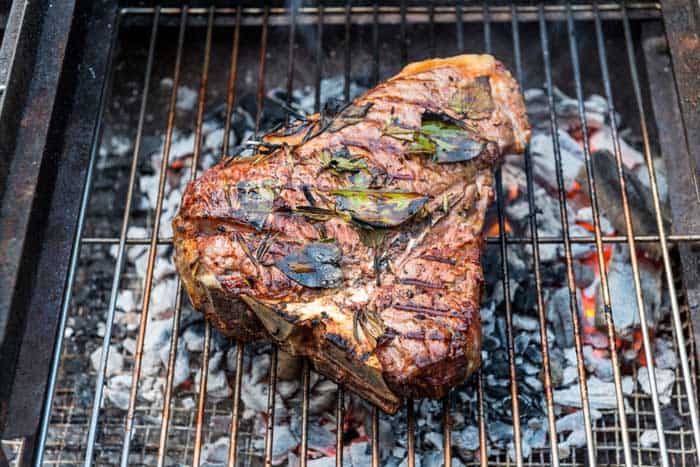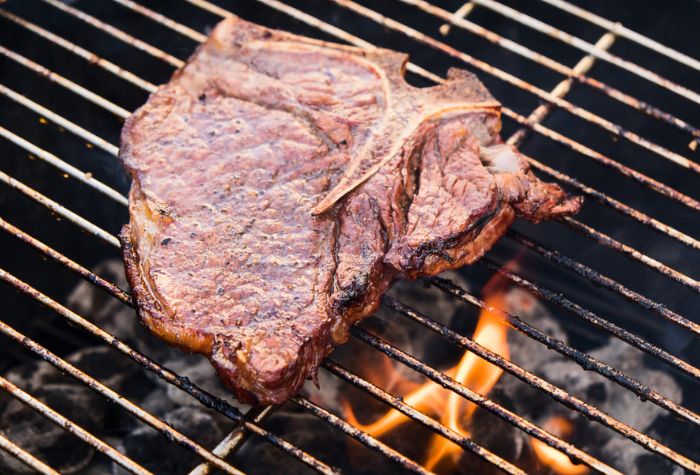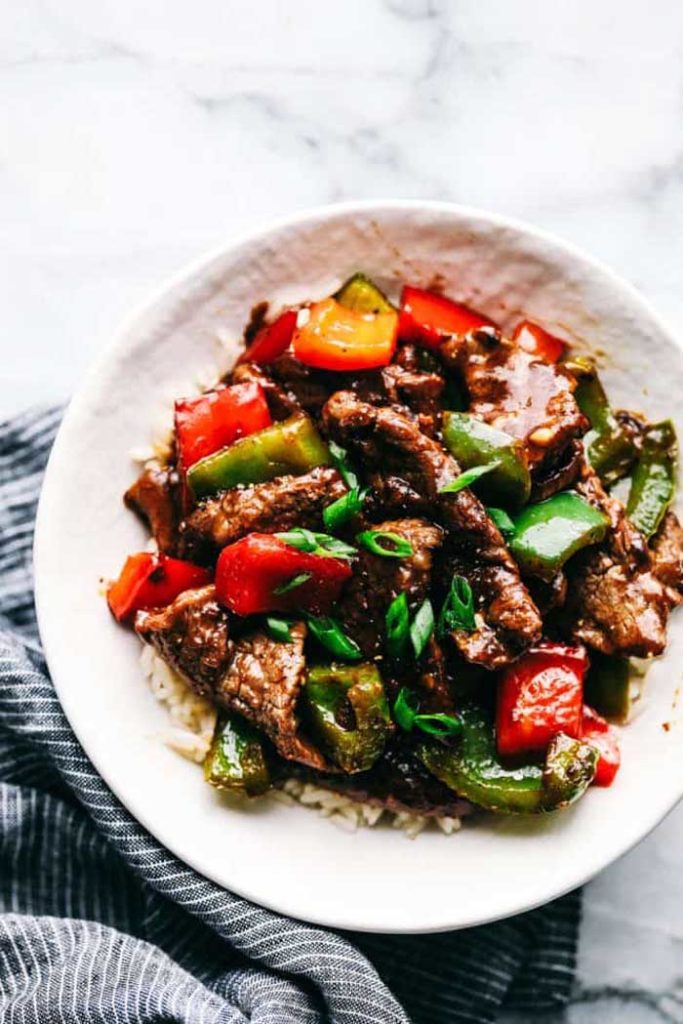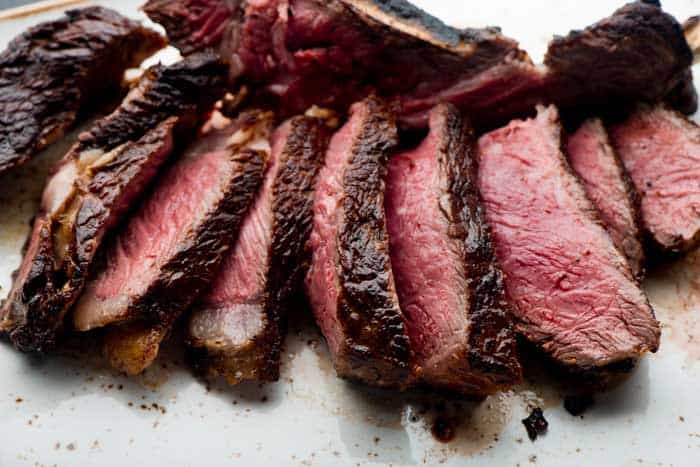Tough and chewy steak getting you down? Get beautiful, tender steak every time with our easy meat prep guide.
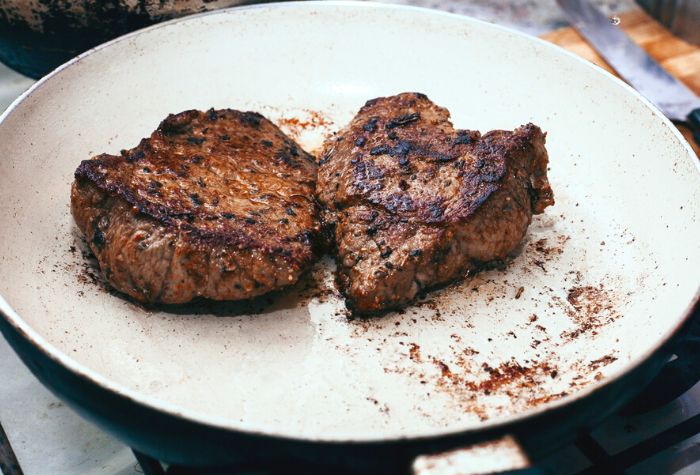
There is no greater disappointment than tucking into a delicious-looking steak only to find that it is chewy and tough.
It can happen to the best of us. Even restaurant-quality chefs with the highest grade cuts of steak get it wrong sometimes. But what makes a steak chewy, and what can be done to avoid it?
From choosing the right steak grade to perfecting your meat prep, discover how to prevent tough and chewy beef steak. Let’s get cooking!
Why is My Steak Tough & Chewy?
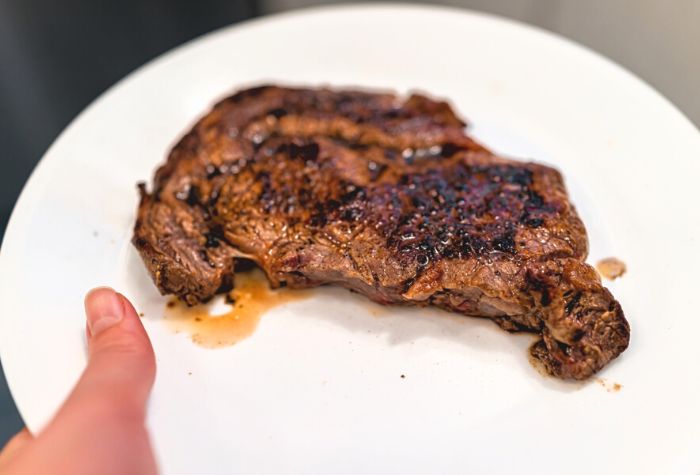
Steak can be chewy or have that horrible tough and stringy texture for a wide number of reasons.
It might not have been the best quality of meat to begin with, or it wasn’t prepared in a way that meant it was tenderized before cooking.
Perhaps it was too thin and became overcooked, or it was the opposite and was too thick, meaning it didn’t cook thoroughly and the fats didn’t have time to infuse back into the meat.
Whatever the reason for your steak being chewy, there will be a simple solution to remedy it and avoid a stringy situation next time.
Let’s take a look at the reasons why your steak might be chewy, and how to fix them…
Meat Quality
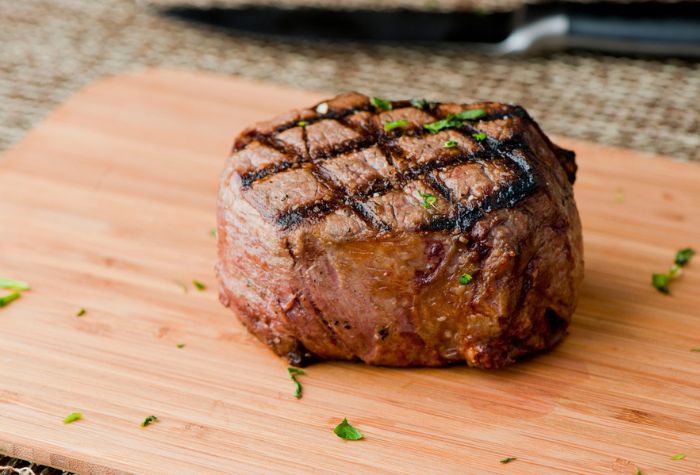
One of the first and most obvious reasons why your steak might be chewy or tough is that the quality of the meat wasn’t great in the first place.
As with every type of cooking, the better the quality of the ingredients, the better the result you’re likely to get.
When choosing steak, you want to look for a cut with a good amount of marbling (the white streaks and flecks of fat you see running through the meat). The better the distribution of fat marbling, the less likely your steak will become dry and chewy.
You also want to pick steaks that have been butchered to the correct thickness; thin steaks will overcook and become leathery very quickly – look for steaks that are a minimum of 1 inch thick.
More often than not, purchasing your meat from a butcher will result in your getting the best quality steak for your money.
Steak Grade
Lower-quality beef will produce a lower-quality steak; there’s no way around it other than making sure you buy the best grade steak that your budget will allow.
To get a good idea of the overall quality of the steak you are purchasing, you can look at the grade it has been given:
- Prime beef is the highest quality grade of steak. The meat will have come from young, well-fed cattle, and it will have a good amount of well-distributed fat marbling. Prime beef will be found at a butcher rather than the supermarket and is of restaurant-level quality.
- Choice beef is still a good quality steak but without the price tag of prime beef. It’s what you’d find in the supermarket and will still be tasty but have less fat marbling; it’s your everyday affordable home-cook kind of meat. It would be fine for steaks, but you aren’t going to get that restaurant-quality finished result as easily.
- Select beef is the lowest tier, it’s obviously still fine to eat, but it is leaner and doesn’t make for a good steak. It’s much more affordable than Prime and Choice beef, but it’s more of an ‘ingredient meat’ used as part of a recipe than a standalone steak quality grade.
Steak Cut
All cuts of beef are delicious, but they are not all equally suited to being steaks. Choosing the wrong cut of beef for your steak can be one of the reasons why your steak is chewy.
Some cuts of steak can be really lean, such as tenderloin steaks which are cut from a group of muscles that aren’t worked hard on the cow. Despite that lack of fat marbling, tenderloin steaks will still be tender.
Cuts from areas such as the brisket will have more fat marbling running through them, but since they are from an area of muscles used all the time, it will be tough if used as a steak cut. Brisket tastes best when it’s slow-cooked to the point where it will melt in your mouth – equally as delicious as steak but better suited for slow cooking.
If you want a tender melt-in-the-mouth steak with the least chance of being chewy, opt for filet mignon, t-bone, rib-eye, sirloin, strip, or flat iron steaks.
Not Aged
Aging can play a big part in how tender a steak is once it’s been cooked.
With meat, the general rule is that fresh is best, but some cuts of beef can taste even better once they have been aged.
Dry-aged steak can have a better flavor and be more tender than fresh steak as the aging process allows enzymes to break down tough tissue, giving them a more melt-in-the-mouth texture and richer taste.
Undercooked
If a steak hasn’t been cooked long enough, it can become chewy or tough as there hasn’t been enough time for the heat to fully penetrate and melt the fat and any connective tissue. If these fats and connective tissues are cooked down and allowed to melt into the surrounding meat, they stay as stringy and chewy sections in the steak.
Overcooked
Overcooking steak is just as bad as undercooking it and can leave it tasting chewy but for different reasons.
When a steak is overcooked, the excess prolonged heat destroys the fats and evapourates the juices, leaving the meat dehydrated and the fibers shrunken. Dehydrated meat fibers have no ‘give’ in them, making them extremely hard to chew.
An excellent example of this consistency after extreme dehydration is beef jerky; all of the moisture has been pulled out of the beef when making jerky which turns it into a leather-like consistency that snaps or tears off in chunks.
No Tenderizing
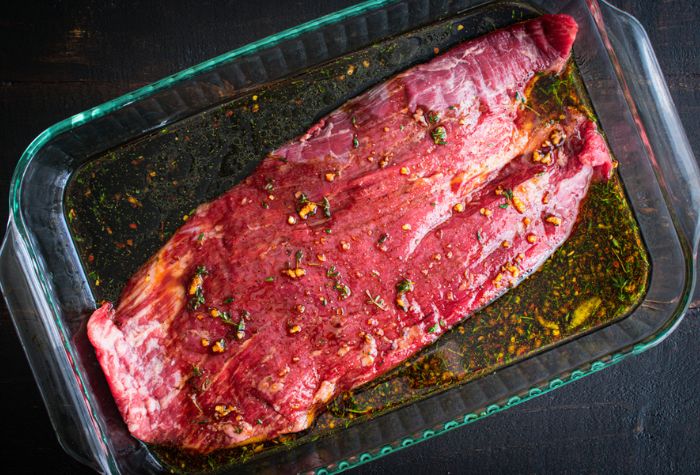
Not all cuts of steak are created equally, and for some that are already less tender, just due to the area they are cut from, it’s important to tenderize them before cooking.
The best way to tenderize a steak is by marinating it overnight in the fridge.
Using a marinade with an acidic base (like vinegar, lemon juice, or buttermilk) will help break down the muscle fibers so that they are already less ‘stringy’ before you even get to cooking the steak.
Using a dry brine or seasoning that includes salt is also a way to tenderize a steak before cooking. Salt will break down and draw the moisture out of the steak proteins; the salt then dissolves into this moisture and reabsorbs back into the meat as a brine solution making it more tender and juicer.
Cooking Temperature
Cooking temperature is key when it comes to grilling steak.
People are often scared to overcook steak, and following simple logic, they think that too much heat will mean that steak cooks too fast. If it cooks too fast, it’ll lead to it being overcooked, so the simple solution to that is to cook it at a lower temperature – but this is the ultimate steak sin.
With steak, you want a sizzling hot grill that will sear the surface of the meat. By searing the meat you create a protective ‘crust’ that tastes great and allows the inside to cook more slowly and evenly.
Not Sliced Properly
When slicing and serving a steak, the key thing to remember is to cut against the grain.
The grain in meat is made up of muscle fibers and how they run through the cut. Longer muscle fibers are hard to chew, so you need to cut meat against the grain to ensure each steak slice has the shortest fibers possible and doesn’t become chewy.
Fat Content
The level of fat marbling or fat content your steak has plays a big part in the texture once cooked. Marbling refers to the amount of fat visible in the meat between the muscles. The more white streaks and flecks of evenly distributed white you can see in the raw steak, the better. This is because the fat renders down during the cooking process and melts into the meat, giving it a better taste and making it softer.
If your steak is too lean, there isn’t enough fat to infuse into the meat when cooking, which can result in a dry and tough steak.
